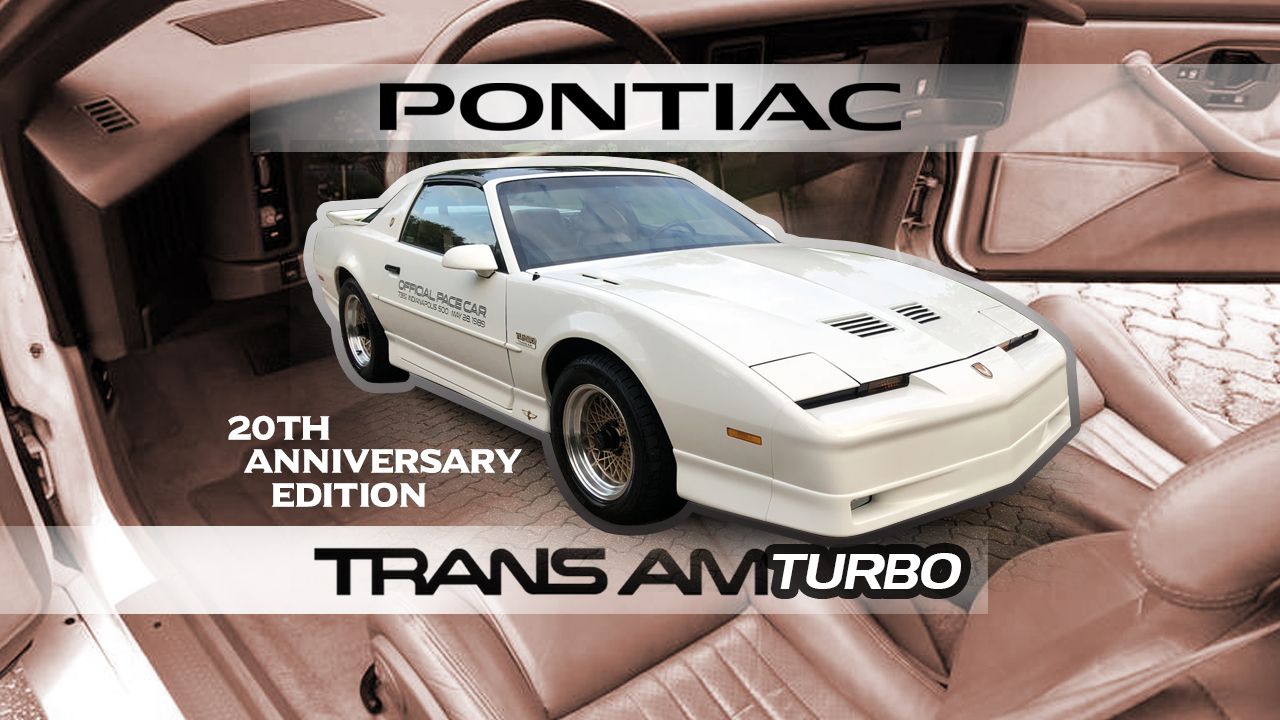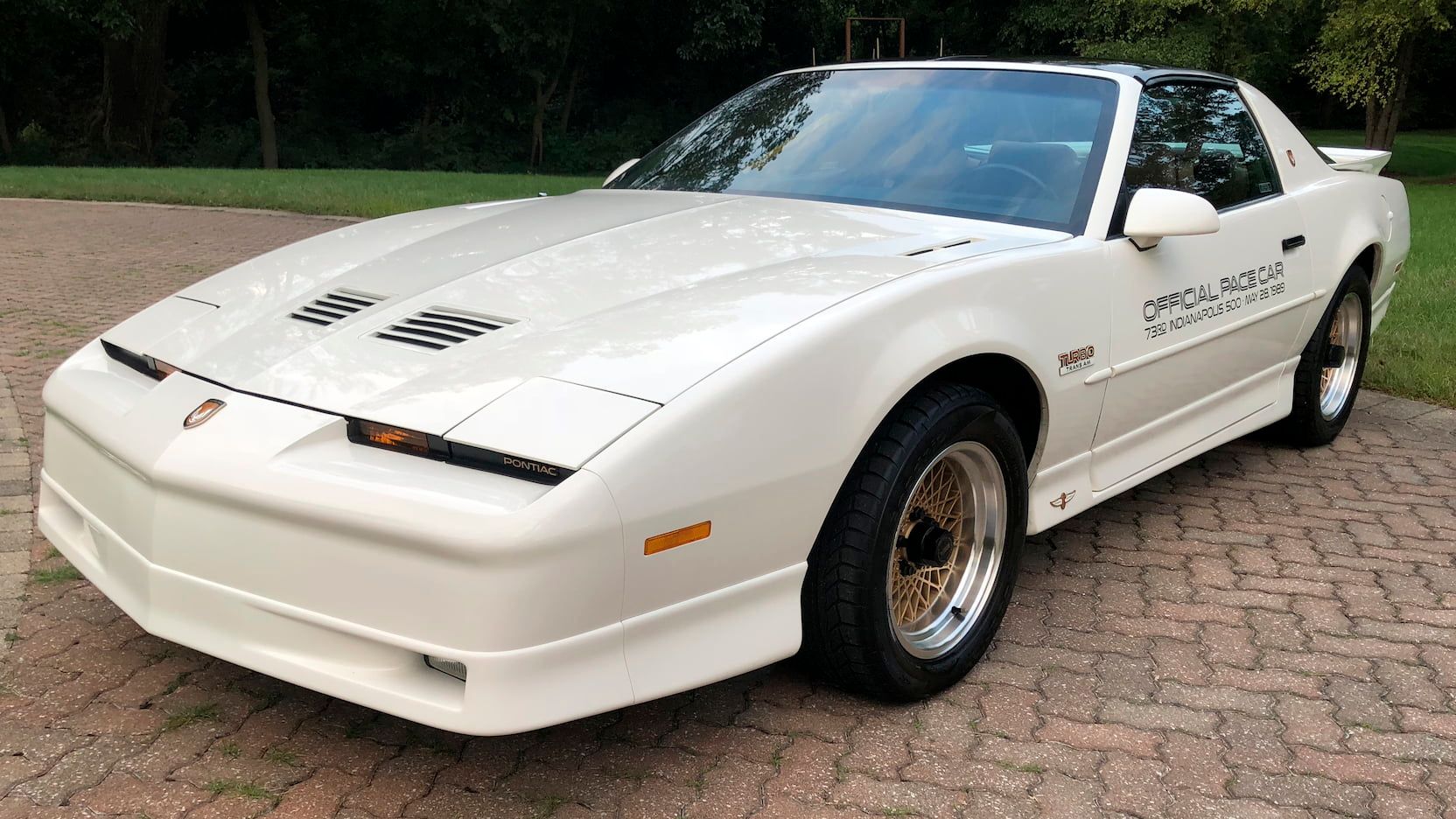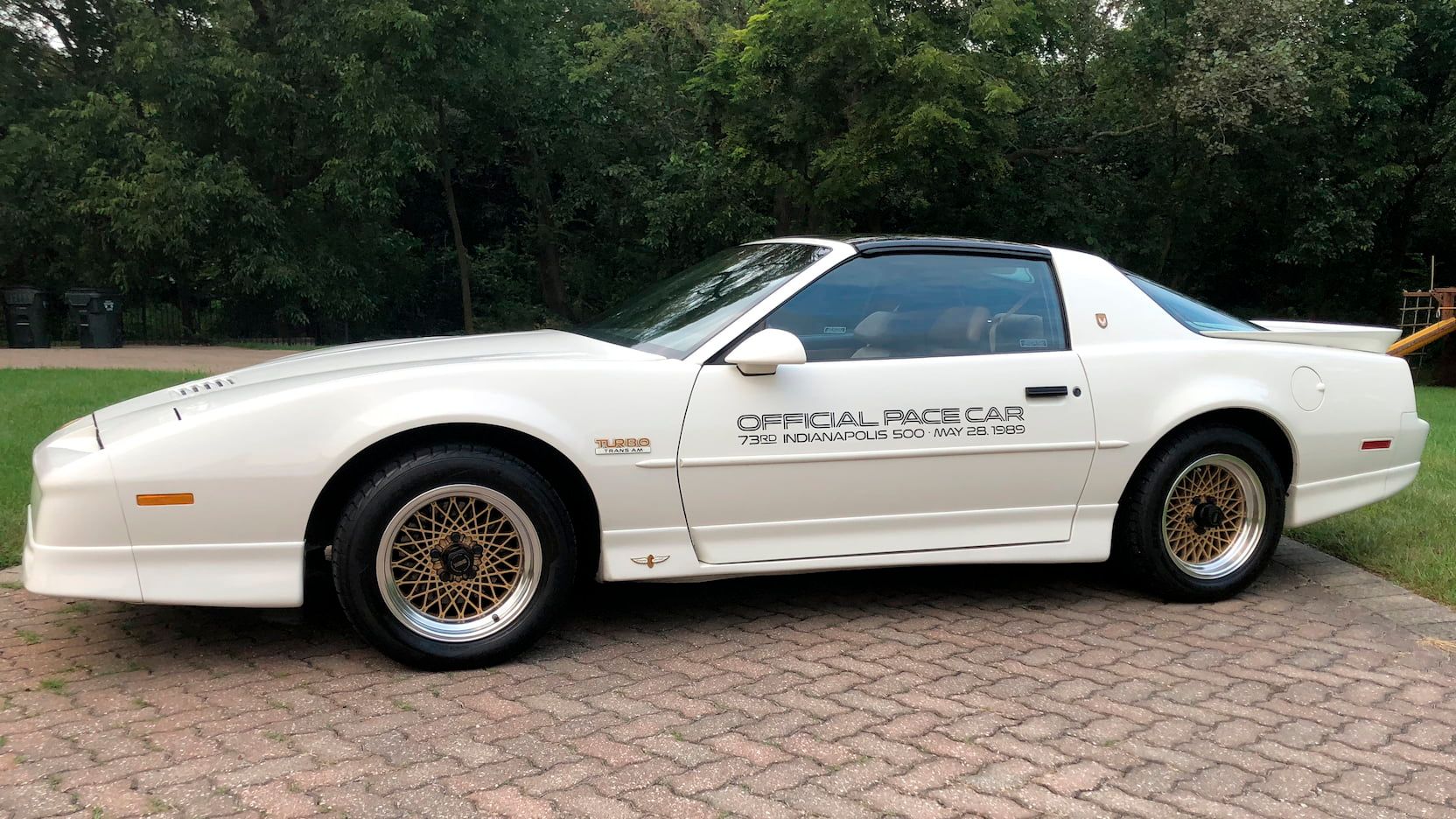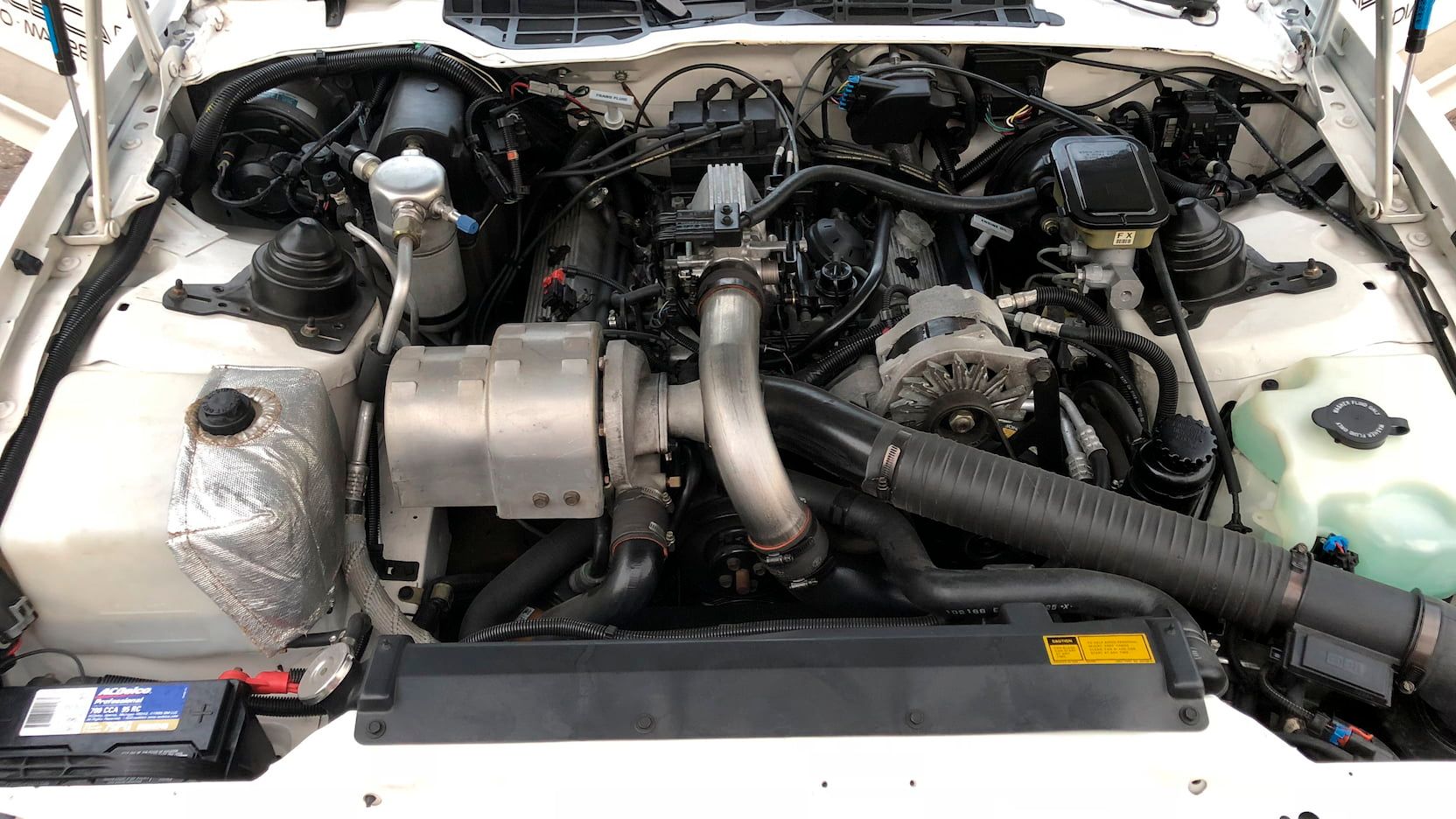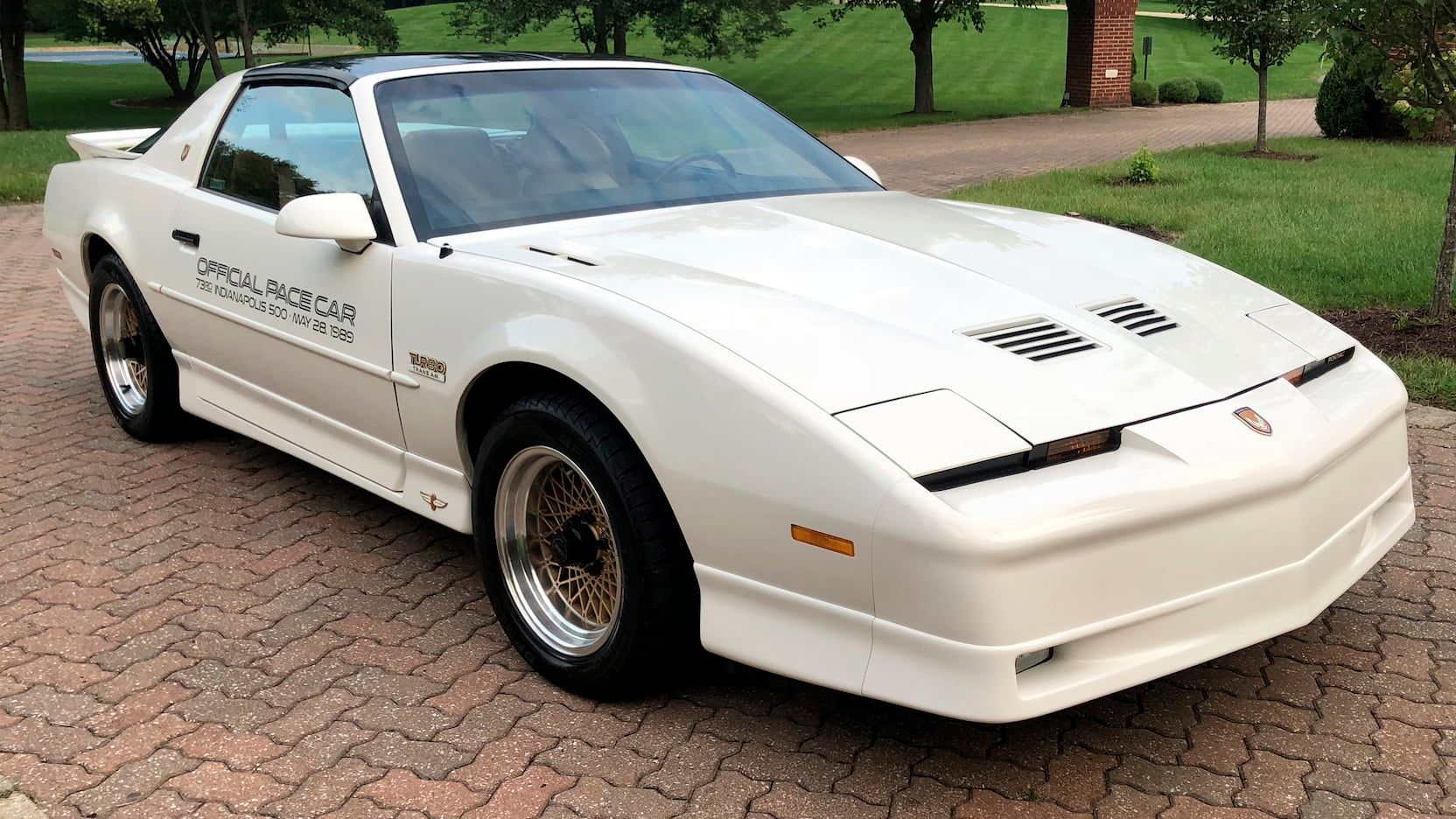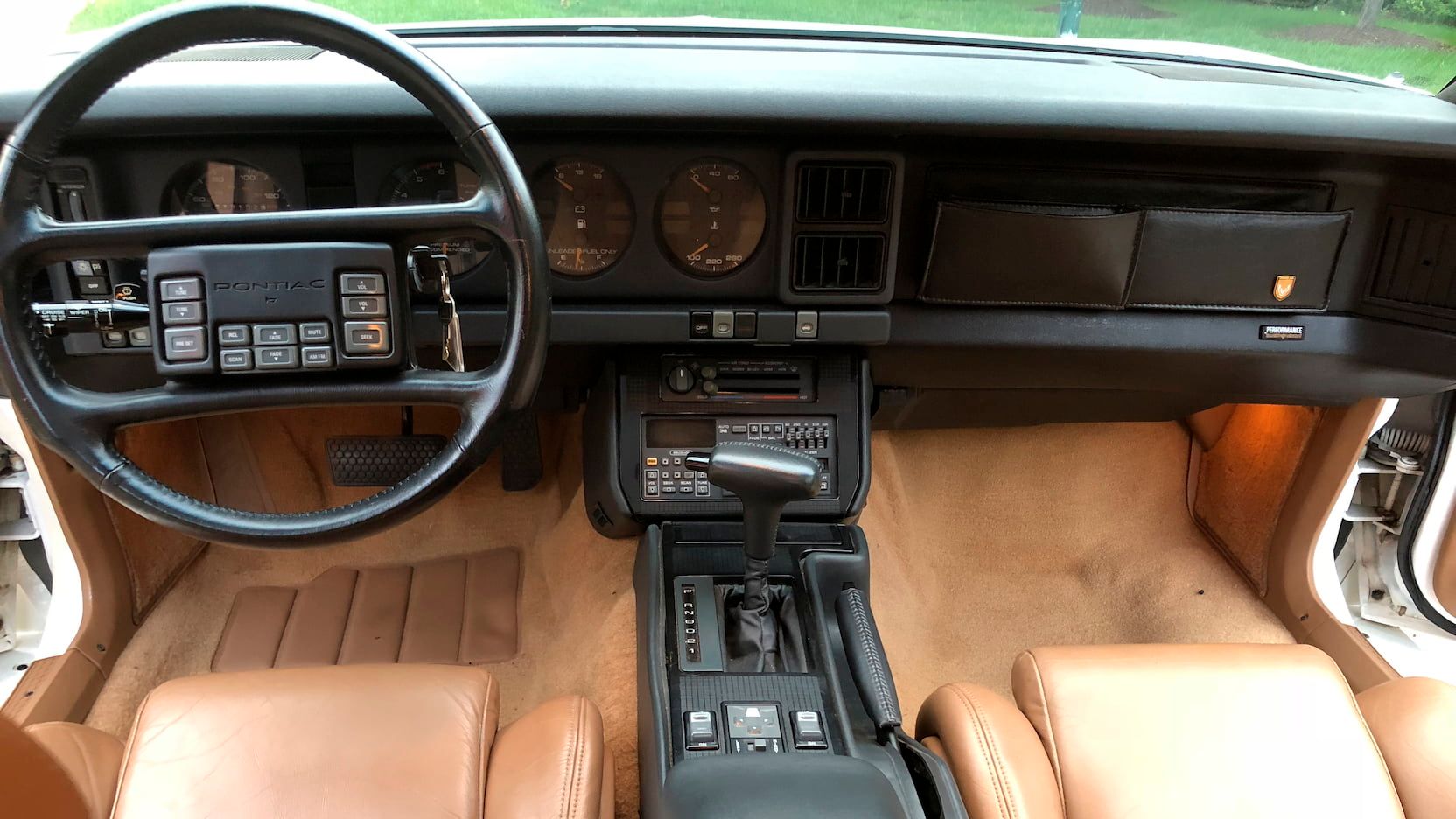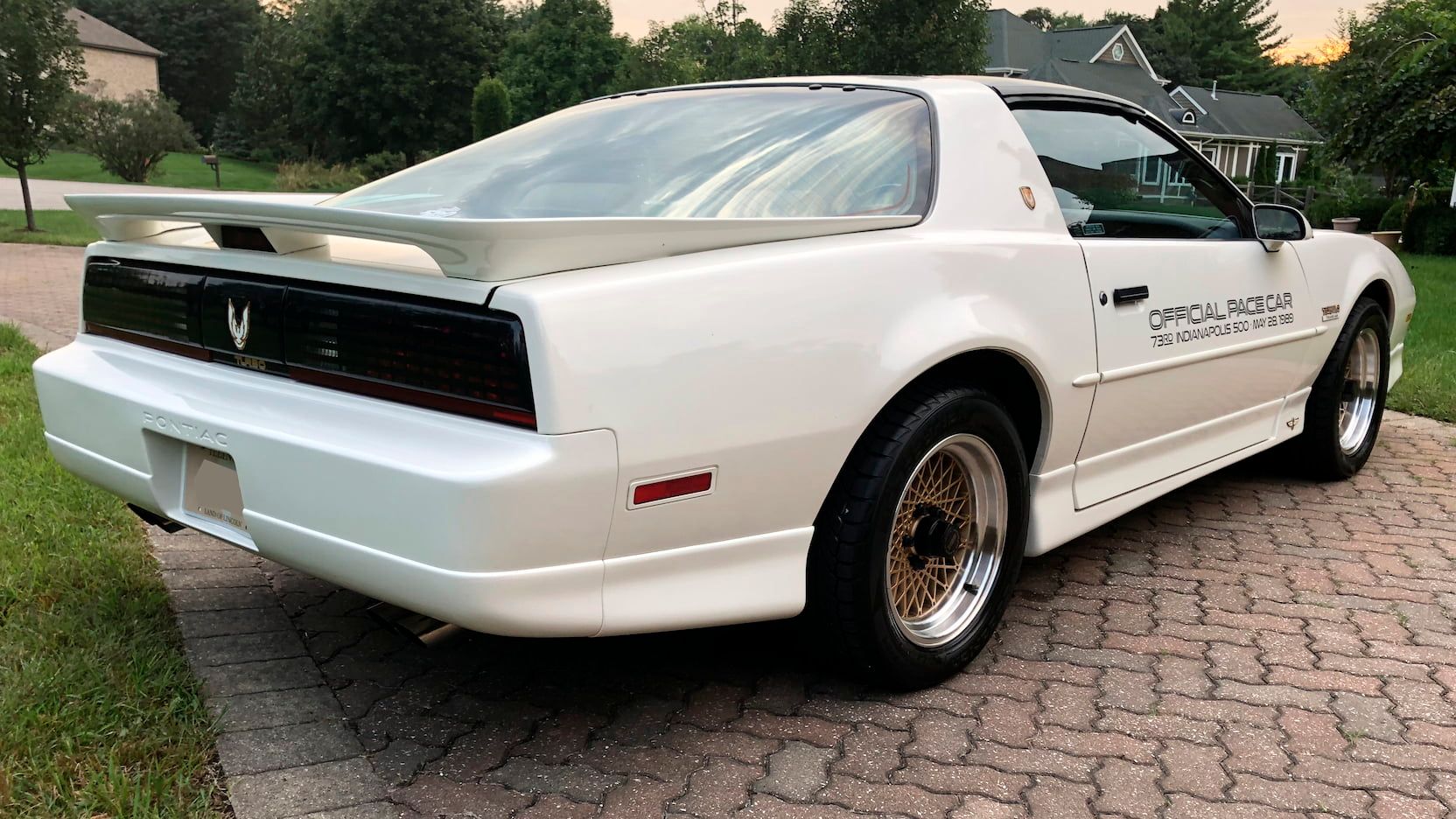The most invariable aspect of a muscle car is the V-8 engine. You just can't have a muscle car without a V-8. However, there are exceptions, albeit very few. You probably know of the Buick GNX, nicknamed “Darth Vader’s car”, which had a 3.8-liter turbocharged V-6, and, in 1987, was quicker than a Corvette. But, there was another car with the same engine – the 1989 Pontiac Trans Am 20th anniversary – and here’s what you need to know about it.
The 20th anniversary was based on the third-generation Pontiac Trans Am, produced from 1982 to 1992}. Being a 1980s American product, the Trans Am featured a variety of anemic engines, among which a 2.5-liter “Iron Duke” inline-four, three different V-6 engines, and two V-8 options, the most powerful of which was the 235-horsepower L98 version.
Was the turbocharged V-6 better than a V-8?
The 20th anniversary came out in 1989, exactly 20 years after the first-generation Pontiac Firebird Trans Am (1967-1969) was discontinued. What makes it particularly interesting is GM’s decision to ditch the 350 cubic-inch V-8 for the 3.8-liter SFI turbocharged V-6 from the Buick GNX. In the Grand National Experimental, the turbocharged mill was conservatively rated at 276 horsepower at 4,400 RPM and 360 pound-feet (488 Nm) at 3,000 RPM.
What's the performance of the Pontiac Trans Am 20th anniversary Turbo?
In the Pontiac Trans Am 20th anniversary, the same engine is rated at 250 horsepower, but in reality, the car made 301 horsepower. The 340 pound-feet (461 Nm) torque figure was also believed to be severely underrated. In 1989, the car was able to do the quarter-mile in 13.4 seconds at 101 mph (162.5 km/h). The 1989 Pontiac Trans Am 20th anniversary Turbo could also sprint from 0 to 60 mph (97 km/h) in 4.6 seconds. Like the GNX, the Pontiac came equipped with a Turbo Hydromatic four-speed automatic.
Pontiac Trans Am Turbo 20th Anniversary Edition specifications
|
Engine |
3.8-liter SFI turbocharged V-6 |
|---|---|
|
Power |
250 HP |
|
Torque |
340 LB-FT |
|
0 to 60 mph |
4.6 seconds |
|
Transmission |
four-speed automatic |
|
Quarter mile |
13.4 seconds |
|
Quarter mile speed |
101 mph |
In order for the 3.8-liter V-6 to fit in the Trans Am engine bay, GM engineers had to use cylinder heads from the front-wheel-drive version of the engine. Other modifications included different pistons in order to keep an identical combustion chamber volume, recalibrated control module, a new cross-drilled crankshaft, and new stainless-steel headers.
The 1989 Trans Am Turbo also rides on upgraded suspension and lightweight 16-inch gold Diamond-Spoke aluminum wheels, wrapped in Goodyear ZR50 radial tires. This translates to the Pontiac staying firmly planted on the road.
Styling
The exterior of the Trans Am 20th anniversary was finished in a white monochrome paint job, reminiscent of the first-generation Trans Am. There are also the obligatory, 20th anniversary badging, found on the car’s nose, sail panels, front fenders, and taillight strip.
Interior-wise, the limited-edition Trans Am has also been updated. Full-leather bucket seats and a leather-wrapped multi-function steering wheel can be found inside. All 20th-anniversary models come with T-tops as standard. Despite the numerous improvements, however, the overall quality is still, very much 1980s GM, which means some creaks and rattles are par for the course.
Rarity and signifficance
We have Buick engineer, Bill Owen to thank for the Pontiac Trans Am 20th anniversary Turbo. After a successful “battle” with corporate executives and all the red tape, the limited-edition Trans Am finally came to fruition. The 20th anniversary Turbo was also the Indianapolis 500 pace car, at the time. This is the only limited-edition Trans Am to receive a V-6 engine.
The Trans Am 20th anniversary Turbo had a total production run of 1,555 units. Exclusivity always came at a price, which is why, ,in 1989, a new Trans Am 20th anniversary Turbo cost around $31,000, which in 2022 money amounts to $69,750.
Going out with a bang
In the 1990s, Pontiac was, pretty much, on breathing by command. The brand was slowly reduced to selling a rebadged Holden Monaro until finally, in 2010, the Pontiac brand was defunct. That said, the 1989 Pontiac Trans Am 20th anniversary Turbo ended a very difficult era of the American automotive industry with a bang. It also proved that despite strict emissions regulations, Pontiac can still make competitive performance cars.

